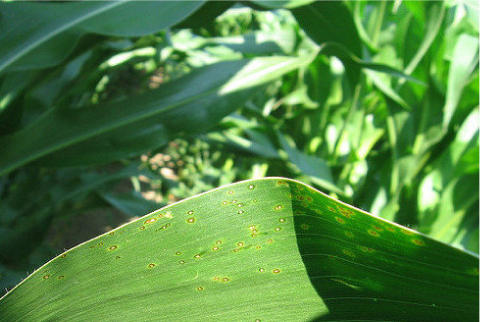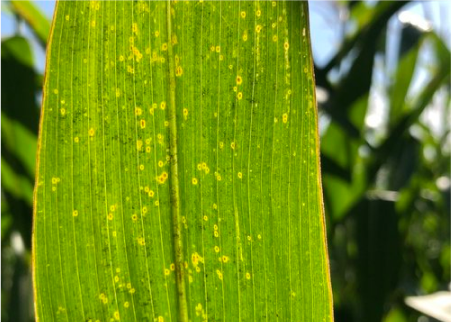Eyespot (Aureobasidium zeae)

Eyespot: biology
Eyespot is a foliar corn disease. The fungus overwinters in residue, making it more prevalent under continuous corn and reduced tillage systems. Disease development is favoured by cool, wet conditions. Infection can occur throughout the growing season, generally infecting the oldest, lower leaves first and progressing up the plant. Damage from eyespot usually looks worse than it actually is, though yield loss is possible if the disease reaches the upper leaves of the plant.
Eyespot: damage description

Eyespot produces characteristic round or oval lesions (3 mm to 6 mm in diameter) that initially appear water-soaked; later the centre turns tan surrounded by a brown or purple border. A translucent yellow halo is also visible when held up to the sun. Leaf blighting may occur when these lesions join, killing large portions of leaf tissue. Infections occur on leaves, leaf sheaths and husks. The disease can be confused with non-infectious physiological leaf spots or insect damage.


